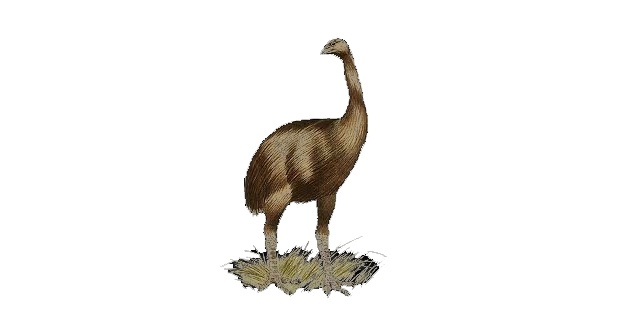Science
Colossal Bioscience Aims to Revive Moa with Advanced Technology

A Texas-based biotech company, Colossal Bioscience, is advancing its initiative to resurrect the South Island giant moa, an extinct bird that once roamed New Zealand. The firm is collaborating with researchers from Ngai Tahu, a Māori iwi (tribe), to leverage cutting-edge techniques in ancient DNA extraction and gene editing, similar to their previous efforts to recreate species such as dire wolves and mammoths.
During a recent interview, Ben Lamm, the chief executive of Colossal Bioscience, outlined the ambitious project. The goal is to bring the giant moa back to life using sophisticated genetic technologies. This initiative reflects a growing trend in biotechnology, where companies are exploring de-extinction as a viable option for preserving biodiversity.
Innovative Techniques and Collaborations
The process involves extracting DNA from well-preserved moa specimens and using gene editing technologies, including CRISPR, to modify the genetic material of closely related bird species. This approach aims to create a living organism that resembles the giant moa, which stood over three meters tall and weighed around 230 kilograms.
The collaboration with Ngai Tahu is particularly significant, as the iwi holds cultural and historical ties to the moa. Lamm emphasized the importance of engaging with indigenous communities in projects that involve their heritage. “We are committed to working closely with Ngai Tahu to ensure that this project respects their traditions and values,” he stated.
Colossal Bioscience’s project is part of a broader movement seeking to reverse the impacts of extinction caused by human activity. The company believes that by reviving the moa, they can contribute to ecological restoration efforts in New Zealand, potentially aiding in the recovery of other native species.
Future Implications and Challenges
Despite the excitement surrounding de-extinction, challenges remain. Ethical considerations and ecological impacts must be thoroughly examined. Critics argue that focusing on reviving extinct species might divert attention from current conservation efforts aimed at protecting endangered species.
Nevertheless, Lamm is optimistic about the potential of their research. He noted that advancements in biotechnology could pave the way for similar projects in the future, further expanding the possibilities of reviving other extinct species.
As Colossal Bioscience continues its work, the world watches closely. The resurrection of the South Island giant moa could mark a significant milestone in the field of biotechnology and conservation, opening new discussions about the role of humans in the natural world.
-

 World4 months ago
World4 months agoTest Your Knowledge: Take the Herald’s Afternoon Quiz Today
-

 Sports4 months ago
Sports4 months agoPM Faces Backlash from Fans During Netball Trophy Ceremony
-

 Lifestyle4 months ago
Lifestyle4 months agoDunedin Designers Win Top Award at Hokonui Fashion Event
-

 Entertainment4 months ago
Entertainment4 months agoExperience the Excitement of ‘Chief of War’ in Oʻahu
-

 Sports4 months ago
Sports4 months agoLiam Lawson Launches New Era for Racing Bulls with Strong Start
-

 World5 months ago
World5 months agoCoalition Forms to Preserve Māori Wards in Hawke’s Bay
-

 Lifestyle4 months ago
Lifestyle4 months agoDisney Fan Reveals Dress Code Tips for Park Visitors
-

 Health4 months ago
Health4 months agoWalking Faster Offers Major Health Benefits for Older Adults
-

 Politics4 months ago
Politics4 months agoScots Rally with Humor and Music to Protest Trump’s Visit
-

 Top Stories5 months ago
Top Stories5 months agoUK and India Finalize Trade Deal to Boost Economic Ties
-

 Health2 months ago
Health2 months agoRadio Host Jay-Jay Feeney’s Partner Secures Visa to Stay in NZ
-

 World5 months ago
World5 months agoHuntly Begins Water Pipe Flushing to Resolve Brown Water Issue









